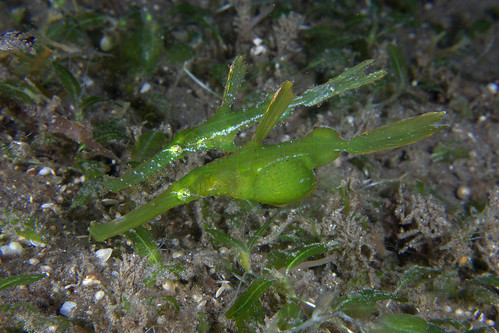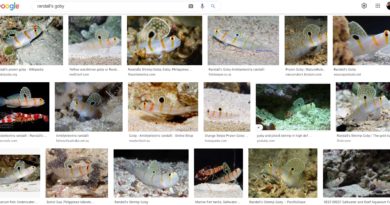Critter Spotting: Figure Ground Separation
I recently had the pleasure to attend a workshop on proper critter spotting organized by the Philippines’ Department of Tourism, held at Silver Reef Resort in Dauin on Negros Island. I wrote about the workshop in this blog post:
I also made a video about the very cool event:
The Psychology of Critter Spotting
The workshop inspired me to think more about the perceptual processes involved in successfully spotting a “critter”. I am, after all, originally a neuroscientist by training. The distinction between seahorse, nudibranch or pipefish and its environment is not a given for our visual system (for our eyes and the parts of our brains they connect to). There is no “label” or “tag” associated with the critter to tell us where to look. Our brain has to make an educated guess where the visual boundary of the critter is located.
Let’s look at the famous vase-face image:
This is a famous example from psychophysics (the part of psychology interested in our senses) where two perceptions are possible: either seeing two faces, or a vase. One observation is that we can willingly switch between seeing either the face or the vase. We can make a decision what to focus on. The same happens in critter spotting – we can let our perception wander over the seagrass, or we can focus in on the details of each blade, hoping to see a nudibranch or a seahorse there. We can consciously, willingly change the focus, or the “searchlight” of our attention.
So, the issue we face is one of figure-ground-separation. The human visual brain needs to make a decision. Where does the background end? Where does the critter start (or is there even a critter)? What criteria does it use to distinguish figure and ground?
Cues
What are useful cues? Let’s take this example of a couple of robust ghost pipefish which float over the seagrass:
One cue is the continuous shape of the animals. You can trace the outline of the fish with your eyes, and you will get back to your point of origin. Also, the colors of the animals are a bit different – more so in a photograph taken with a powerful underwater strobe. This is the reason why critter spotters often use a dive light to look for critters, even during the day. Another criterium used by our visual system to find the outline of an object is that all parts of the fish move together.
All of these criteria are called Gestalt criteria, after the school of Gestalt psychology, which originated in Germany and Austria among psychologists in the early 20th century. Gestalt means “shape” in German. These are probabilistic criteria, where our visual system assigns the tag “object” to any percept which is likely a continuous object. In essence, the critters which want to camouflage themselves play a game with our visual system, by making the Gestalt criteria as little salient as possible. We are dealing with low-probability percepts: the visual system is often not completely sure if that is seagrass or a critter, and sometimes classifies them as non-critters – camouflage achieved!
An interesting effect I noticed in myself is that of “false positives”. I would see critters where there are none. I would look at an oddly shaped twig, and, for a moment, think that it’s a pipefish. Upon quick inspection I would realize that the twig is in fact a twig and no fish. What I believe happened is that I set my probabilistic threshold for critter detection just a tad too low, and would (briefly) mis-identify objects as critters which are not. Well, it’s better to do that than to set the threshold too high and to miss critters.
Task Loading
One point I want to make is how task loading plays into the issue of critter spotting. We have a limited total of brain-power. We can only drive a car and have a conversation at the same time. Driving, texting, eating a burger and having a conversation at the same time will lead to poor performance in some of the tasks. For instance, we might drop the burger or crash the car. This principle of task loading is important in diving, since we might do more than one thing at once: looking out for our safety by monitoring the environment and the air remaining in our tanks, AND looking for critters and photographing them.
“It’s just pictures of fish” my friend, the underwater photo legend Marty Snyderman once said. What he meant by this is that it’s not worth dying for an image of a nudibranch. We must manage our task loading so that our safety while diving is assured.
The principle of task loading also works in the other direction. Only if we as divers are well trained and experienced can we assign a relatively small amount of our cognitive capacity to our diving procedures, we have a much higher proportion left available to dedicate to critter spotting.



